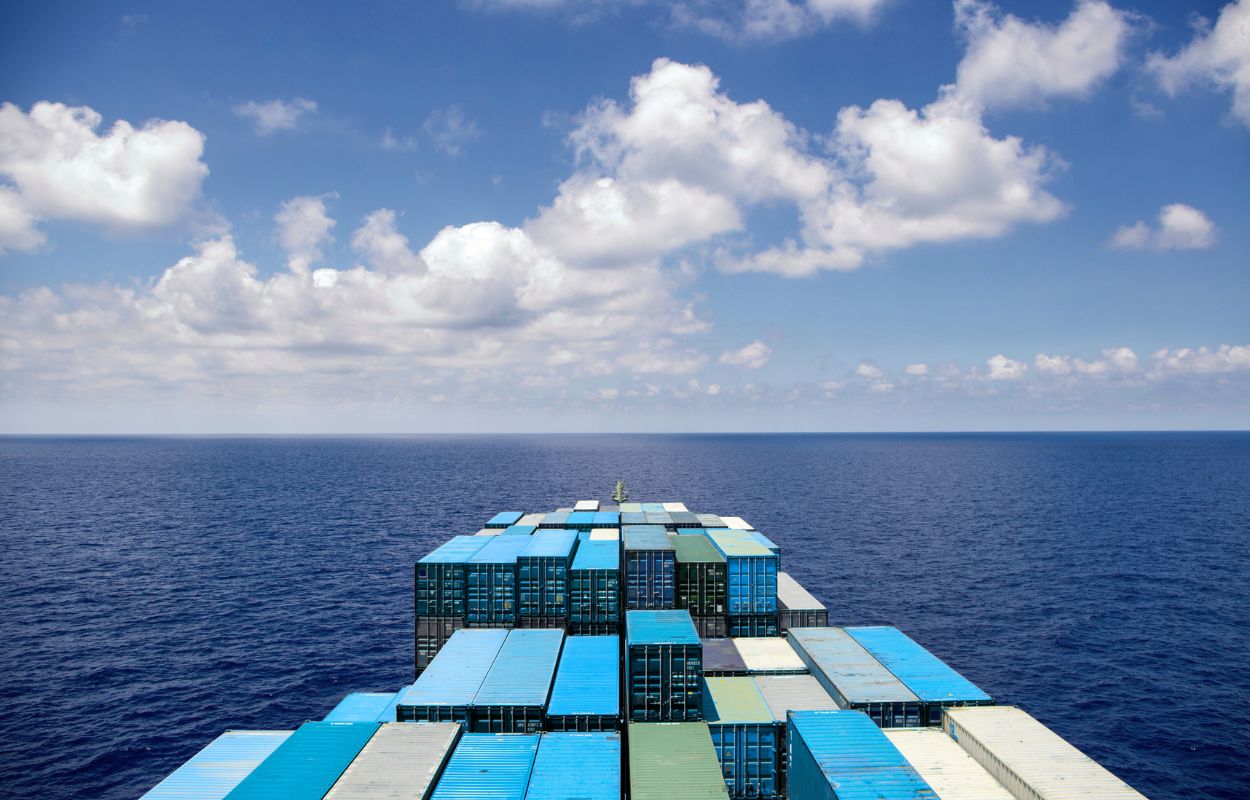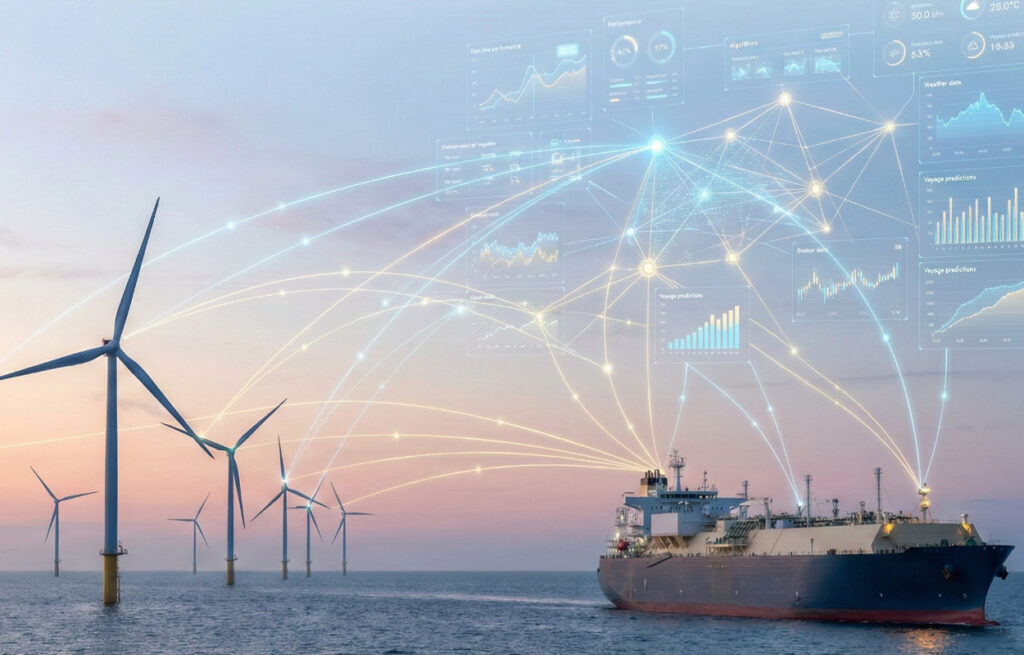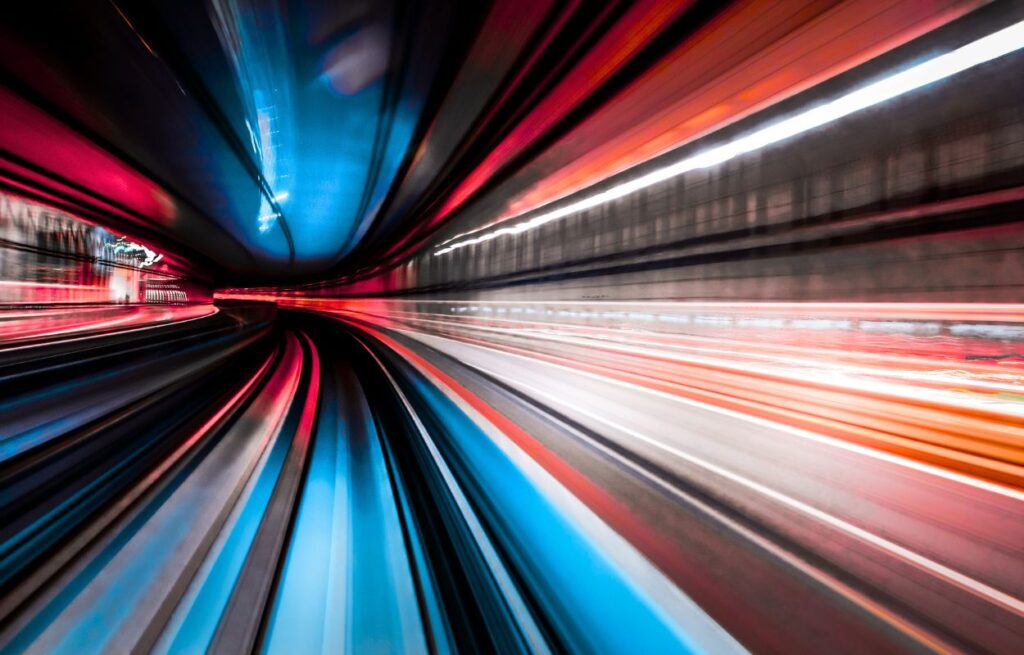Shipping is the lifeblood of the global economy, carrying more than 80% of world trade by volume across the seas. But with that scale comes responsibility. The industry produces around 2 to 3% of global carbon emissions, and in a system this vast, even the smallest efficiency gains matter. Cutting fuel use by just a fraction or hitting a tighter arrival window does not only save money for one operator, it cascades across fleets, ports, and supply chains worldwide.
That is the challenge Tom Melamed, Head of Data Science at 90POE, and his team are working on. 90POE’s platform, OpenOcean STUDIO, covers everything from crewing to maintenance, but Tom’s focus is vessel predictability, using data to make voyages more reliable, more efficient, and ultimately more sustainable.
The power of predictability
Formula 1 is a great example of the power of data science. Every decision on the pit wall comes down to how you interpret the data: when to pit, how hard to push, how to adapt to changing conditions. But when it comes to shipping, how do you give operators the confidence to make the right calls in one of the world’s most unpredictable environments?
Inefficiency in shipping comes down to uncertainty. Operators often sail faster than necessary, building in a buffer to make sure they do not miss their port slot. The result is wasted fuel, higher costs, and ships sat at anchor for days waiting to unload.
By creating a digital twin of customer vessels, combined with regularly updated weather and ocean data, Tom’s team can show not just how a voyage is going but how it is likely to end: arrival times, fuel use, carbon intensity, and risks along the way. And because the model re-optimises as conditions change, operators can adjust speed or course in time to make a difference.
As Tom explains, “One of our early customers was interested but sceptical. Two days before the end of the voyage, we told them the speed they needed to sail. They followed the speed we instructed and actually arrived 12 minutes early for their port slot. That’s when they saw the power of our predictions.”
Building a digital twin of the ship
The science behind this is anything but simple. No two ships behave in the same way. Their size, propeller type, weight, and even how recently the hull was painted or cleaned all affect performance at sea. Tom’s team can build a reliable model from basic vessel details, but the real accuracy comes when they start layering in ship-specific data.
Sometimes that means high-frequency sensor feeds streaming in by the minute. Other times it’s simply an operator’s own records from past voyages (called noon reports). What matters most is not the volume of data but its quality. As Tom notes, high-frequency feeds are useful but not essential. With the right inputs, the models can fill in the gaps and give owners a clear picture of how their vessel will behave long before it reaches open water.
From data to performance
One clear win is predictive maintenance. As Tom explains, “Over time, barnacles and seaweed increase drag and fuel use as the ship is a lot harder to push through the water.” Cleaning is costly, so operators want to do it at the right moment. By tracking how a ship’s performance changes over time, the team turns guesswork into evidence and helps customers decide when cleaning really makes sense.
Another is something as basic as knowing a vessel’s true speed. You might think the answer is simple: just stick a sensor on the hull. Devices like Doppler sensors do a good job of showing changes in speed, but they are less reliable when it comes to absolute speed. To solve for this, Tom’s team built what they call a virtual speed through water, combining AIS satellite positioning data, onboard logs, RPM (the revolutions per minute of the engine or propeller) and other signals to give a more accurate picture than any single sensor can.
The road or sea ahead
90POE’s role is not to make decisions for customers but instead to provide them with additional intelligence that elevates future ones. Tom stresses that voyages can be optimised in different ways depending on what matters most: arriving on time, minimising fuel, cutting costs, or finding the balance. Each choice has trade-offs, but what matters is putting control back in the hands of operators, supported by accurate predictions.
It is the same principle you see in Formula 1. The pit wall does not drive the car, but it gives the driver the insight to know when to push, when to hold back, and when to change course. And if Formula 1 has shown anything, it is that marginal gains win races. In shipping, they could change the course of global trade.
Looking for more insights?
Get exclusive insights from industry leaders, stay up-to-date with the latest news, and explore the cutting-edge tech shaping the sector by subscribing to our newsletter, Commodities Tech Insider.




